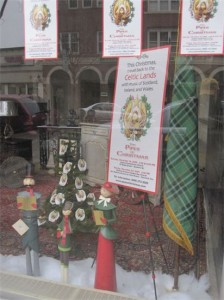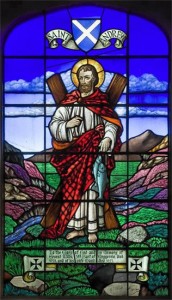NEWS – St. Andrew’s Day
Nov. 30, 2009
“Pipes” NJ Matinee Performance is Sold Out
The producers of the Pipes of Christmas received a most welcome St. Andrew’s Day gift – learning that the NJ matinee of their annual Celtic Christmas concert had completely sold out.
“We are absolutely thrilled at the outstanding level of support we’ve received from our friends and supporters this year,” said executive producer Robert Currie. “In what has been an incredibly challenging year, we are grateful for their kind show of support.”
The news arrived on the same day that the “Pipes” officially debuted their extensive storefront window display in downtown Summit. Currie continued, “We are delighted to have such a strong visual presence in downtown Summit, NJ – home of the “Pipes of Christmas” for the past 11 years.”
The storefront display was made possible by the generous support of Bassett Associates of Summit, owner of the building and local merchants The Summit Sampler and McErlain Antiques.
These sponsors join a long list of concert supporters led by the Grand Summit Hotel, The Balvenie Single Malt Scotch Whisky, The Classic Malts of Scotland, Walkers Shortbread and Kluge Winery and Vineyards.
About St. Andrew
Saint Andrew is the Patron Saint of Scotland, and St. Andrew’s Day is celebrated by Scots around the world on the 30th November. The flag of Scotland is the Cross of St. Andrew, and this is widely displayed as a symbol of national identity. The “Order of Saint Andrew” or the “Most Ancient Order of the Thistle” is an order of Knighthood which is restricted to the King or Queen and sixteen others. It was established by James VII of Scotland in 1687.
Very little is really known about St. Andrew himself. He was thought to have been a fisherman in Galilee (now part of Israel), along with his elder brother Simon Peter (Saint Peter). Both became followers (apostles) of Jesus Christ, founder of the Christian religion.
St. Andrew is said to have been responsible for spreading the tenets of the Christian religion though Asia Minor and Greece. Tradition suggests that St. Andrew was put to death by the Romans in Patras, Southern Greece by being pinned to a cross (crucified). The diagonal shape of this cross is said to be the basis for the Cross of St. Andrew which appears on the Scottish Flag.




